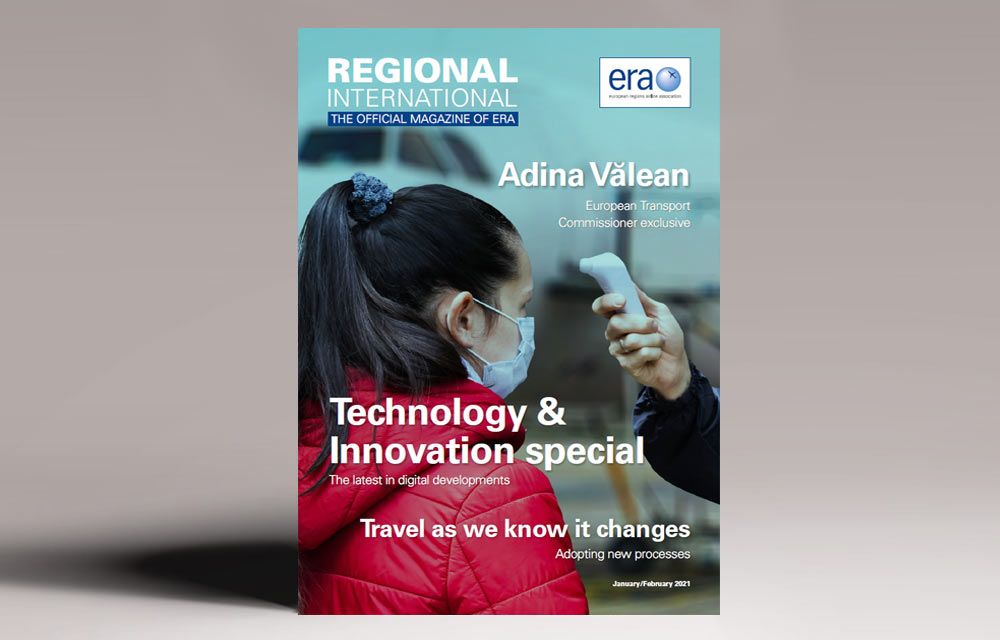
Blue sky thinking: the future of regional travel in Europe
Angus von Schoenberg, Industry Officer, TrueNoord, looks at the likely long-term legacies of COVID-19 and asks how regional operators will manage change to address the socio-economic impacts.
COVID-19
Increasingly, there is a wide consensus that the aviation landscape of Europe could permanently change as a result of COVID-19. So, it’s important to ask, how will this arise and in what ways could this impact Europe’s regional airlines specifically?
Passenger demand
Whatever the short-term future brings in terms of the speed and extent of recovery in passenger demand, several European and global trends do suggest that long-term demand and growth may be lower than in recent decades as customer behaviour evolves.
COVID-19 has accelerated, if not revolutionised, ongoing digital communications. With an increased adoption of virtual meetings, it would suggest that business-related travel in particular will never fully recover. In turn, this would mean that the mix of leisure, visiting friends and relatives (VFR) and business passengers would alter overall to the detriment of average
revenue per passenger.
Increased regionalisation is emerging in manufacturing industries where both COVID-19 and in some areas, greater political tension, has proven global supply chains to be fragile. This would imply less international and long-haul travel and transit of goods. Intuitively, this should not impact domestic regional airlines, but some passengers on those domestic services would have connected from international services, so regional carriers are – at best – only partially insulated.
In Europe some passengers and governments believe that air transport is not conducive to the reduction of emissions and should therefore be discouraged. As a consequence, passengers may seek to reduce air travel or seek alternative modes.
However, these trends do provide positive opportunities for European regional airlines.
How can regional airlines respond?
From a business travel perspective, digitalisation could also fuel growth. Improved virtual communications may mean that service industry employees or contractors no longer need to travel to their places of work daily. This could see many re-locate to more rural, lower cost areas to both improve quality of life and better protect themselves from future pandemics. They could then commute to their offices perhaps once a week or month, thus fuelling demand for regional connectivity. Companies could equally reduce their floor space needs and relocate to more remote areas to further reduce traditional city centre costs; further fuelling local and regional air travel demand.
Consequently, while traffic, especially higheryield business traffic may suffer in the shortterm, any significant digitalisation-powered structural demographic shift towards more ruralisation should boost air transport demand in future. For example, certain property value indicators in the UK suggest such relocation may already have begun.
Furthermore, at the larger capacity end of the regional airline spectrum, appropriate aircraft are now available that can compete with narrow bodies in mainline carriers, not only on a trip cost basis, but also on costs per seat. Although, the acquisition costs of such A220 or E2 generation E-jets reflect the typical level of sub-150 seaters and would therefore be out of reach for many ERA member airlines, some regional airlines will, in future, serve part of the traditional single aisle market at both competitive costs, and lower the risk of not filling the aircraft.
From an environmental perspective, societal pressure to reduce regional air travel can only be addressed in two ways. First, the regional airline industry needs to continue improving its
performance to approach carbon neutrality. Whilst regional aircraft are already environmentally advanced in many respects, for example, turboprops are highly fuel efficient, this will mean not only adopting the most environmentally-efficient aircraft, but also improving performance at all operational levels, including: air traffic management; maintenance; recycling; as well as increasing the use of sustainable alternative fuels. Furthermore, alternative electric or hydrogen-based propulsion systems will be available on regional aircraft far sooner than on larger platforms.
Secondly, and equally important, the air transport industry needs to communicate its environmental credentials more effectively. ERA continues to play a vital role in this regard. While the messaging on a business-to-business level – and to some extent to governments – is improving, effective business to consumer communication remains almost absent. For example, ATR’s successful completion of green financing might aid business and government communication, but the message has not reached the wider passenger audience. The OEMs can do much more in this area and it would make their task of selling modern, efficient aircraft easier. If this is not addressed, popular consumer resistance to regional flying can only travel in one direction.
Notwithstanding the broad consensus that domestic regional aviation will return to normal operations faster than international travel, there are many questions about how regional carriers in Europe can respond to the headwinds of a potentially permanent change in customer behaviour combined with additional environmental regulatory pressures. Ultimately, customer behaviour could benefit regional carriers particularly if regular competitive services can be offered to the right, and more remote locations, and consumers support a fair environmental cost in availing such connectivity.
 Download the full article as PDF
Download the full article as PDF
Article courtesy of Regional International: https://www.eraa.org/publications/regional-international
23 February 2021

